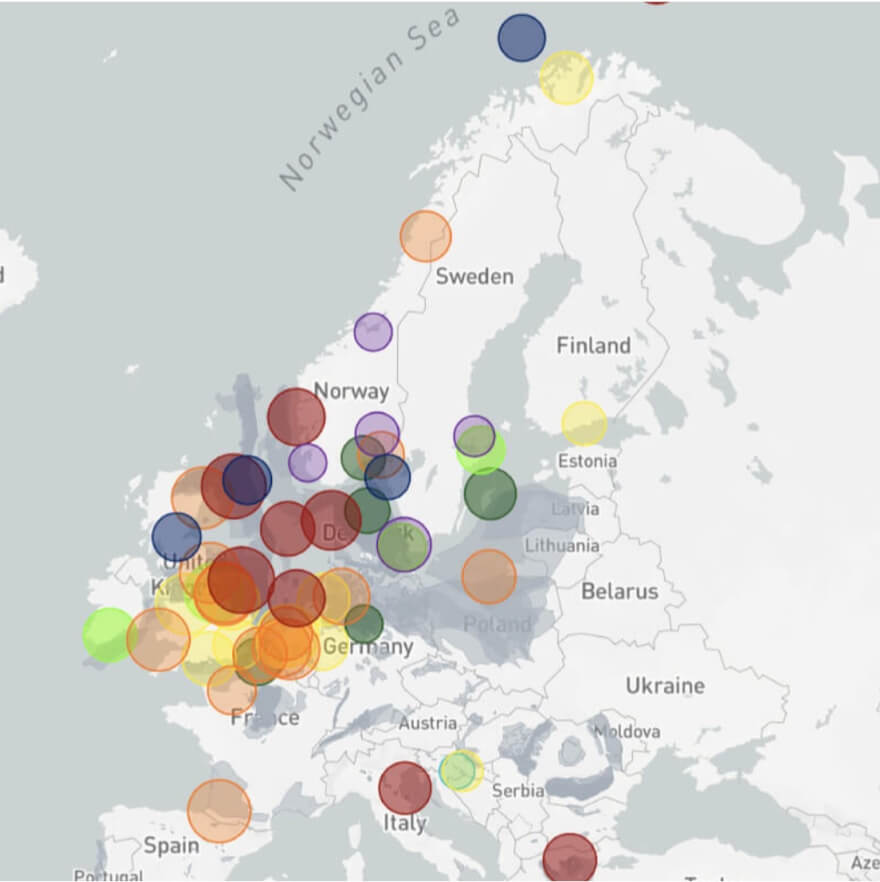Carbon capture and storage deployment
in Europe


Across Europe, countries are increasingly recognising the vital role for carbon capture and storage in their industrial decarbonisation strategies. Modelling has shown that to achieve our climate objectives, up to 600 million tonnes of CO₂ will need to be permanently stored across the continent by 2050. As part of this large-scale deployment, countries across Europe will need to understand the mitigation opportunities for deployment in key industrial sectors as well as their national storage landscape.
How can we ensure carbon capture and storage is deployed effectively across member states? CATF is compiling a library of fact sheets for European countries to begin exploring that question.

Austria has a strategic opportunity to build a cost-effective national CO₂ network to safeguard economic competitiveness and meet its climate targets.

Bulgaria is Europe’s most carbon-intensive economy and has the opportunity to drive decarbonisation with carbon capture and storage technologies in key industries.

Croatia boasts significant potential for permanent CO₂ storage, with options including depleted oil and gas fields and deep saline aquifers and can position itself as a regional CO₂ storage hub.

France is one of the EU’s largest contributors to industrial CO2 emissions, and has identified a need to deploy carbon capture and storage at large scales to meet national climate targets.

Poland has one of the largest potentials for CO2 storage in Europe. By leveraging its storage resources, Poland can ensure broader economic competitiveness, energy security, and deep reductions in carbon pollution.

Portugal will need carbon capture and storage to decarbonise its emissions intensive industries. With emission sources located close to potential onshore and offshore storage sites, Portugal has the potential to seize the carbon capture and storage opportunity and decarbonise its economy.

Romania has committed to decarbonising its economy, including key industries that employ over a fifth of its workforce. With the potential to transport CO2 along the Danube River and its extensive storage potential, Romania has a major climate and economic opportunity to become a CO2 storage hub.

Spain has significant potential for carbon capture and storage to reduce its industrial emissions with an assessed storage potential of up to 44 Gt of CO₂.
Interactive Map
Early-stage carbon capture projects in Europe
Going more granular, CATF has built an interactive map that tracks carbon capture projects that have been publicly announced in Europe. Users can click on the colored circles on the map to learn about each project’s location, sector (industrial, power, or direct air capture), type of CO₂ storage, storage capacity and current status.
CCS Cost Tool
The cost of carbon capture and storage in Europe
This interactive tool provides an overview of the cost of carbon capture and storage in Europe, according to the location and characteristics of each emissions source. Use the tool to explore different scenarios for reducing the cost of CO₂ transport and storage, and to visualise the scale of the CO₂ abatement opportunity at different carbon price levels.
CATF Report
A policy framework for carbon capture and storage in Europe
Clean Air Task Force outlines a set of concrete steps needed to produce a comprehensive carbon capture and storage strategy fit for Europe’s climate ambitions.




